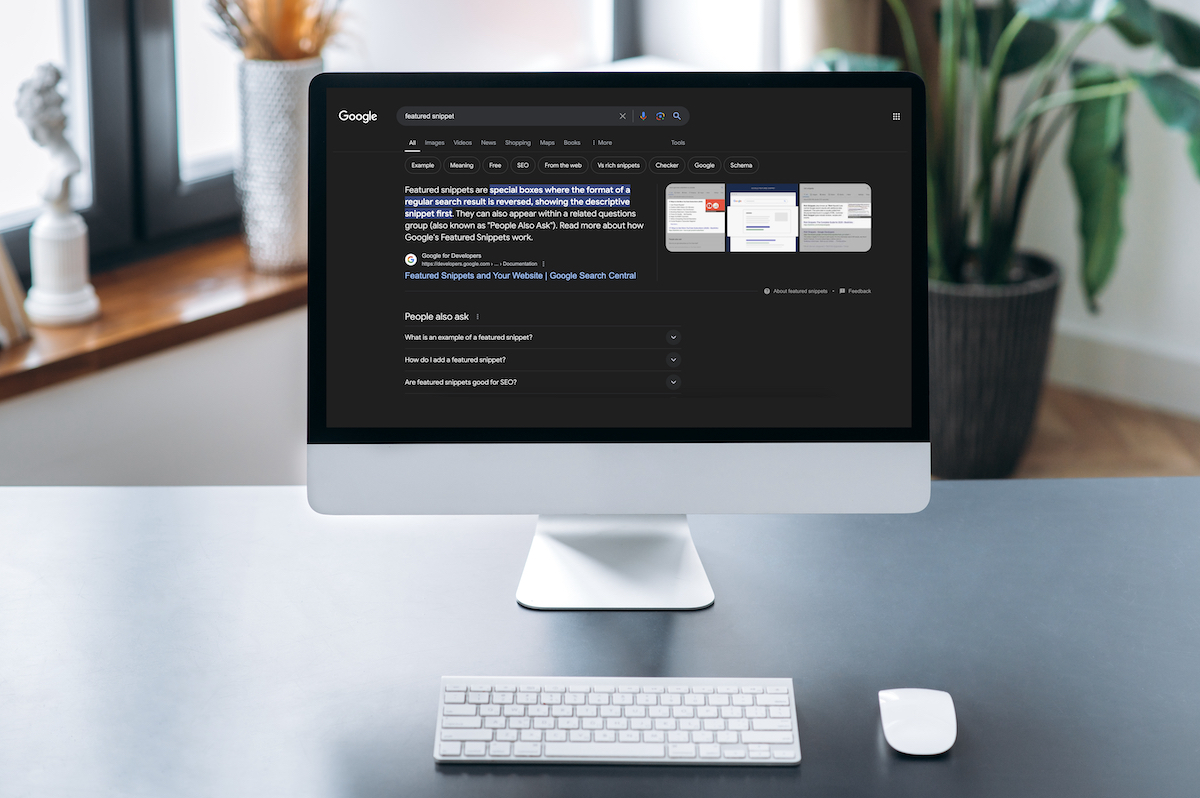In the rapidly changing landscape of SEO, the rise of zero-click searches has become a significant trend that businesses must adapt to in order to stay competitive. Zero-click searches refer to instances when users get the answers they need directly from the search engine results page (SERP) without clicking through to a website. The primary vehicle for these zero-click searches? Featured snippets.
Featured snippets are concise, direct answers that appear in a box at the top of the search results, often referred to as “position zero.” If your website can capture this coveted spot, it can drive significant traffic and boost your brand’s visibility. In this blog, we’ll dive into featured snippets, the types of snippets, and how your business can optimize for them.
What Are Featured Snippets?
A featured snippet is a brief web page excerpt that directly answers a user’s query. Google pulls this information from the content of a web page and presents it in a special box at the top of the SERP.
Types of featured snippets include:
1. Paragraph Snippets: Answers provided in a short block of text, often used for “what is” or “how to” queries.
2. List Snippets: Ordered or unordered lists, often used for queries like “steps to do something” or “top 10 lists.”
3. Table Snippets: Data presented in a table format, useful for comparisons and statistics.
4. Video Snippets: Featured clips from videos that directly answer user questions, typically appearing from YouTube.
Why Featured Snippets Are Important
1. Increased Visibility: Featured snippets appear at the very top of the SERP, often above the first organic result. This gives your website prime real estate on Google.
2. Higher Click-Through Rates: Even though featured snippets are designed to answer user queries directly, they also pique curiosity, leading users to click through for more information.
3. Voice Search Optimization: As voice search grows in popularity, featured snippets play an essential role, as voice assistants often pull answers directly from them.
4. Building Brand Authority: Being featured in a snippet boosts your brand’s credibility and positions your website as a go-to source for valuable information.
How to Optimize for Featured Snippets
1. Identify Snippet-Worthy Keywords: The first step is to identify the types of queries your audience is searching for that trigger featured snippets. These are often questions (e.g., “how to,” “what is,” “why,” etc.). Use tools like SEMrush, Ahrefs, or Google Search Console to find keywords that already feature snippets and those where you can potentially rank.
2. Structure Your Content for Snippets: Google selects well-structured and easy-to-extract content. To increase your chances of appearing in a featured snippet, ensure that your content is organized in a clear, concise format.
a. For Paragraph Snippets: Aim for concise answers of 40-60 words that directly address the user’s question.
b. For List Snippets: Use numbered or bulleted lists to clearly outline steps, tips, or reasons.
c. For Table Snippets: Present data in easy-to-read tables, focusing on comparisons and statistics.
3. Use Headers to Frame Questions: Use headers (H2 and H3 tags) that reflect common questions your audience is asking. For instance, a header like “How do I optimize for featured snippets?” followed by a clear answer helps Google understand your content’s relevance to specific queries.
4. Provide In-Depth, Quality Content: While featured snippets often highlight brief answers, Google still prioritizes pages with comprehensive and high-quality content. Ensure the overall page provides detailed information, which adds to your page’s authority and increases its chances of being selected.
5. Incorporate FAQs: Adding an FAQ section to your content is an excellent way to target featured snippets. Include common questions related to your topic, and provide short, direct answers. This is particularly effective for capturing paragraph snippets. Learn more about how FAQ pages enhance your website.
6. Optimize for Voice Search: Featured snippets are the foundation for voice search results. When optimizing for snippets, also consider how your content reads aloud. Make answers conversational and easy to understand, as voice assistants like Google Assistant often pull from these snippets.
7. Analyze Your Competitors: Identify which competitors currently rank in featured snippets for your target keywords. Analyze how they structure their content, the questions they answer, and the format of their responses. This will give you insight into what works and how you can refine your own content to compete.
Monitoring and Refining Your Snippet Strategy
After implementing your optimization strategies, it’s essential to monitor your performance. Use tools like Google Search Console to track if your content is being featured in snippets. Regularly update your content to ensure it remains relevant and competitive. This could mean adding more information, refining your existing answers, or targeting new questions that align with search trends.
Ready to boost your website’s visibility and capture featured snippets for key searches in your industry? Contact Bluedot Marketing today for a consultation and let us help you optimize your content strategy to take advantage of the growing zero-click search trend.







